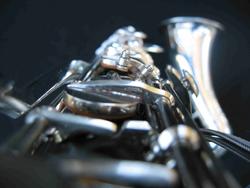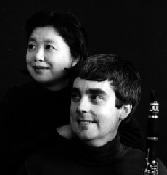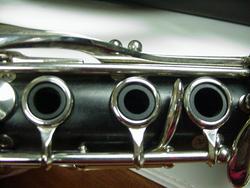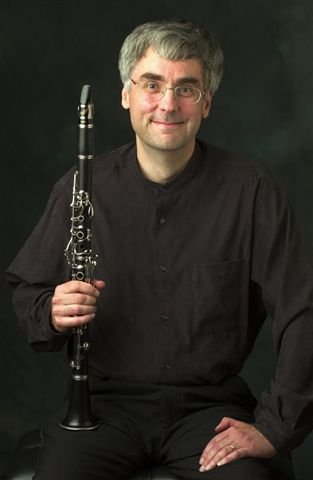Chapter II - Single Sounds discusses alternate fingerings, quarter-tones (including trills and tremolos), and microtones (including equidistant, trills, tremolos, and with percussive key sounds). 478 microtones and 213 alternate fingerings are categorized in terms of acoustical origin, timbre, dynamic range, response, and stability. Numerous musical examples ~more~ |
Chapter III - Multiple Sounds consists of a brief historical overview and dialogue of acoustical explanations for this phenomenon. Multiphonics are classified according to property (overtones or undertones), in practical sequences (according to identical left hand fingerings), by pitch (lowest), timbre, dynamic range, response, stability, and possibility to approach from highest or lowest pitch alone. Many musical examples. ~more~
|
|
Chapter IV - Other Resources includes sounds of definite pitch, sounds of indefinite or ambiguous pitch (noise and pitch approximation), and specific techniques (flutter tonguing, etc.) which may be applied to sounds of one or both categories (or conventional tones, sounds from Chapters II and III, etc.). Many musical examples ~more~

|
Etudes and Exercises are designed as a companion to charts and musical examples of extended techniques. Only a small selection of material from this encyclopedic catalog has been used in these etudes in order to provide both an outline for further development. Each etude is prefaced with a description of its difficulties and suggestions for exercises to approach these difficulties before and during practice. These suggested methods incorporate conventional concepts and methods of clarinet playing and teaching. The etudes are organized into four categories, arranged from closest to conventional techniques [alternate fingerings], to most experimental [non-pitched resources]. ~more~ |
|
Tanosaki-Richards Duo The Tanosaki-Richards Duo, active since 1982, has performed at the 1989 International Electronic Music Plus Festival (Oberlin, OH), the Tokyo American Center, the 1990 and 1993 Kobe International Festivals of Modern Music (Japan), the 1992 Music Forum Series at Shobi Conservatory (Tokyo, Japan), the 1993 Meet the Composer Series at the Center for Computer Music and Music Technology of the Kunitachi College of Music (Tokyo), the 1995 Asian Composers' Forum (Sendai, Japan), in residence at the Conservatorio G. Nicolini, Piacenza, Italy, and at 25 colleges and universities throughout the US and Japan.
Read about them, hear clips from their recordings, and peruse information about upcoming concerts. ~more~ The Tanosaki-Richards Duo, active since 1982, has performed at the 1989 International Electronic Music Plus Festival (Oberlin, OH), the Tokyo American Center, the 1990 and 1993 Kobe International Festivals of Modern Music (Japan), the 1992 Music Forum Series at Shobi Conservatory (Tokyo, Japan), the 1993 Meet the Composer Series at the Center for Computer Music and Music Technology of the Kunitachi College of Music (Tokyo), the 1995 Asian Composers' Forum (Sendai, Japan), in residence at the Conservatorio G. Nicolini, Piacenza, Italy, and at 25 colleges and universities throughout the US and Japan.
Read about them, hear clips from their recordings, and peruse information about upcoming concerts. ~more~

|
The Bass Clarinet of the Twenty-First Century The Bass Clarinet of the Twenty-First Century is designed to serve as a companion to The Clarinet of the Twenty-First Century. A very different instrument from the soprano clarinet, not only do many bass clarinets extend to a low, written C2, but because of the size of the instrument, all of the finger tone holes are covered by key pads (no rings or open holes), and the instrument utilizes two register keys. As a result, what is lost with regard to microtonal capabilities is gained through an extended altissimo register and variety of half-pitched, percussive sound possibilities. The Bass Clarinet of the Twenty-First Century describes 142 alternate fingerings, 118 microtonal fingerings, and 318 multiphonic fingerings. ~more~
The E-flat Clarinet of the Twenty-First Century The E-flat Clarinet of the Twenty-First Century is designed to serve as a companion to The Clarinet of the Twenty-First Century . A very different instrument from the soprano clarinet, it is difficult to play in tune and more resistant to play than the B-flat clarinet, but easier to articulate cleanly. Because of the acoustical design of the instrument, both the altissimo register and color contrasts throughout its range are more limited than that of the soprano clarinet. The E-flat Clarinet of the Twenty-First Century describes 183 alternate fingerings, 446 microtonal fingerings, 419 multiphonic fingerings, and 71 multiphonic trills. ~more~
|

 ning skills and opens one's musical imagination.
ning skills and opens one's musical imagination.
